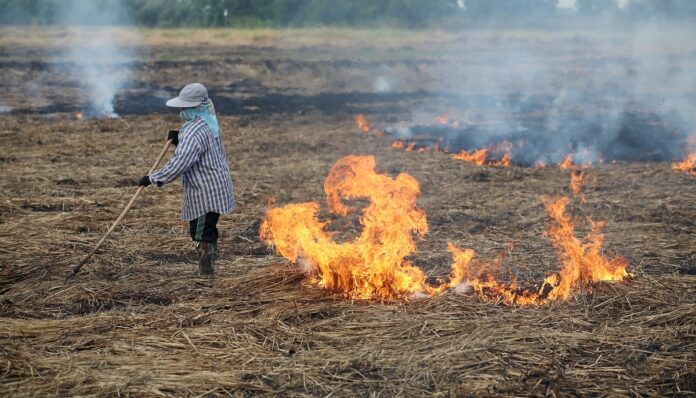In one of our many interactions with farmers, we picked up one conversation with very good lessons for farmers. The farmer narrates how he lost his 10acre farmland to continuous slashing, burning and ploughing in 3 years.
With his major income source suspended, how does he feed his household of 8 members?
Unsustainable ways of farming can really bring any farmer to this point. That is the motivation for sharing that part of his story with you. In addition, we have provided various directions and explanations for his experience in the “Why and what to do”.
My reasons for continuous Slashing, Burning and Ploughing
I had to deal with big trees and stamps during land preparation. The only way to get rid of them was to set them on fire. That wasn’t the first time I was setting cleared bust on fire. In fact, most farmers here do. It has become a practice.
This makes planting easier. You can see the bare soil and just put in your maize, cassava sticks or ginger. I produced ginger in the first season. There was no way I could plough without burning after all the slashing. After ginger, I did cassava, maize in rotation. I had been farming on the land for 6 years.
Why and What to do
You could have sold the big trees as fuelwood. It would have taken a bit of your time but it was a more sustainable option. Burning made the work easier. Yes, but it also reduced the amount of organic matter in the soil. It also disturbed the natural environment of organisms that improved the soil. After slashing or clearing, leaving the residue on the surface of the soil was the best thing to do. The residue covers the soil surface. It reduces moisture loss from the soil. It also helps improve the activity of soil organism. Earthworm, termites and other organisms help improve the soil.
What I noticed on the 3rd year of continuous Slashing, Burning and Ploughing
After the first year, as I did, I slashed and burned. I was preparing to plough. What I did, was to allow the weeds to regrow. Then, I applied my weedicide and ploughed. I noticed some new kind of weeds. Application of weedicides at the recommended rates did not work so well on those weeds. That caught my attention.
The soil became dusty during ploughing. And after a few incidences of rainfall, it became compacted. Planting was convenient. But the weeds that came up after germination or sprouting were overwhelming.
The yields I was recording from the 3rd year were decreasing. However, the quantities of inputs I applied were the same. The same fertilizer and seed rates. I was advised to increase the rates of fertilizer. To get the levels of yields I wanted. This meant extra costs. I remember sometime in the 4th year, during the minor season. I lost a whole maize farm due to lack of rainfall. It was just at the time of tasselling.
Why and What to do
Some weeds seeds require very high temperatures to break dormancy. Burning helped some of these weed seeds to break dormancy. So they started germinating. Controlling weeds of this kind is very difficult. They grow even faster when they get enough sunlight. When the land is bare, that condition is just right for them.
Continuous ploughing breaks the soil particles into smaller sizes, like dust particles. Then they are rearranged. Like shaking a bottle of sand vigorously. The finest particles settle at the base followed by the next finer particles and so on. These particles after a period of wet and dry become compact. Sometimes like concrete. That is a typical soil problem resulting from ploughing.
As explained before, when the land is bare, all conditions for weeds to grow are available. To prevent this always keep the soil surface covered. The crop residue does the job but the farmer burnt it.
What I had to do ultimately
The problems were worsening. Thinking to myself, why did I have to spend so much? Ploughing, planting, fertilizer application and not get good yields? I was advised to leave the land for about 5 years. The 5 years in to allow the land to regain its fertility. Within that period I was supposed to grow crops or plants that will make the process faster. I was hesitant initially. Basically, because there wasn’t any other piece of land available for me to crop on and I had a family to feed.
Why and what to do
At some point, the cost of production will be so high. The farmer will only be making losses. With urbanization and development, farmlands are not so available. This means you can’t afford to lose one to bad agricultural practices.
When this happens, cover crops can help make the process of fallow quicker. A good cropping plan will also help you to plan your farmland and how you use it in production.
You have to avoid or be cautious with continuous slashing, burning and ploughing of farmlands.
Lesson summary
Farm the smart way. Practise sustainable agriculture.


